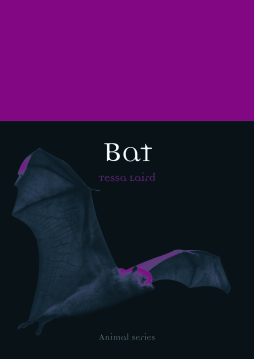
Additional Information
Book Details
Abstract
Bats have been maligned in the West for centuries. Unfair associations with demons have seen their leathery wings adorn numerous evil characters, from the Devil to Bram Stoker’s Dracula. But these amazing animals are ecological superheroes. Nectar-feeding bats pollinate important crops like agave; fruit-eating bats disperse seeds and encourage reforestation; and insect-eating bats keep down mosquito populations and other pests, saving agricultural industries billions of dollars. Ranging in size from a bumblebee to creatures with a wingspan the length of an adult human, found on all continents except Antarctica, and displaying extraordinary abilities like echolocation—a built-in sonar system that enables many bats to navigate in the dark—these incredibly diverse mammals are as surprising as they are misunderstood.
In Bat, Tessa Laird challenges our preconceptions as she combines fascinating facts of bat biology with engaging portrayals of bats in mythology, literature, film, popular culture, poetry, and contemporary art. She also provides a sobering reminder of the threats bats face worldwide, from heatwaves and human harassment to wind turbines and disease. Illustrated with incredible photographs and artistic representations of bats from many different cultures and eras, this celebration of the only mammals possessing true flight will enthrall batty fans, skeptics, and converts alike.
"Laird’s dazzling study takes in everything from Colombian breast plates to Chinese matchboxes, not to mention the Australian newsreader who raised an orphaned flying fox."
— Times Higher Education
"Did you know that the collective noun for bats is a 'cloud,' or that in the first scientific classification of mammals, bats were placed close to humans because, like us, they have two nipples? The book Bat . . . is full of similar tidbits that you will want to share with others. It is also engrossing, eloquent, and beautifully illustrated. Bat contains hundreds of delightful bat facts, but they are so grounded in context that the whole is much more than the sum of its parts. One cannot help but become intrigued and eventually transformed. I know I will never look at bats the same way again."
— Conversation
"Bat is an interesting dissection of the many different sides of bats, from both a biological and a cultural view point. The book is full of intriguing, bizarre, and astonishing facts about bats, from biology, pop culture, mythology, literature, and art. The main focus is on the interaction of bats and human life—the way they are portrayed within different cultures, the effect that has on the cultural opinion, and what that means for their protection in the law or lack thereof. . . . Bat is a celebration, showing the positive side of bats and uncovering many of the mysteries they have been shrouded in for so long."
— BTO News
"There is much more to learn in this captivating volume. Some examples are the discussions of the complex evolution of bats, the account of how echolocation was established, including the bizarre experiments of Italian biologist Lazzaro Spallanzani, how Batman rose to fame, the comparison of bat flight and Star Wars, and the ideas that philosophers have about bats. . . . Part of Reaktion Books’ ambitious Animal series, this exhaustively researched volume is appropriate for college or advanced high school readers. It would be a valuable addition to a classroom library. . . . Profusely illustrated with captivating photographs."
— American Biology Teacher
Tessa Laird is a lecturer in critical and theoretical studies in the School of Art of the Victorian College of the Arts, University of Melbourne. A noted New Zealand art critic, she is the founder of art magazines Monica Reviews Art and LOG Illustrated and the author of A Rainbow Reader.
Table of Contents
| Section Title | Page | Action | Price |
|---|---|---|---|
| Cover | Cover | ||
| Title Page | 3 | ||
| Imprint Page | 4 | ||
| Contents | 5 | ||
| 1. Dazzling Diversity: The Biology of Chiroptera | 7 | ||
| 2. Bats in the Belfry: Myths, Madness and Melancholia | 45 | ||
| 3. Good Luck Charm: Branded by the Bat | 79 | ||
| 4. The Beleaguered Bat: Depredation, Disease and Death | 111 | ||
| 5. Potent Totem: The Bat in Art and Philosophy | 140 | ||
| Timeline | 174 | ||
| References | 176 | ||
| Bibliography | 195 | ||
| Associations and Websites | 196 | ||
| Acknowledgements | 197 | ||
| Photo Acknowledgements | 199 | ||
| Index | 202 |
